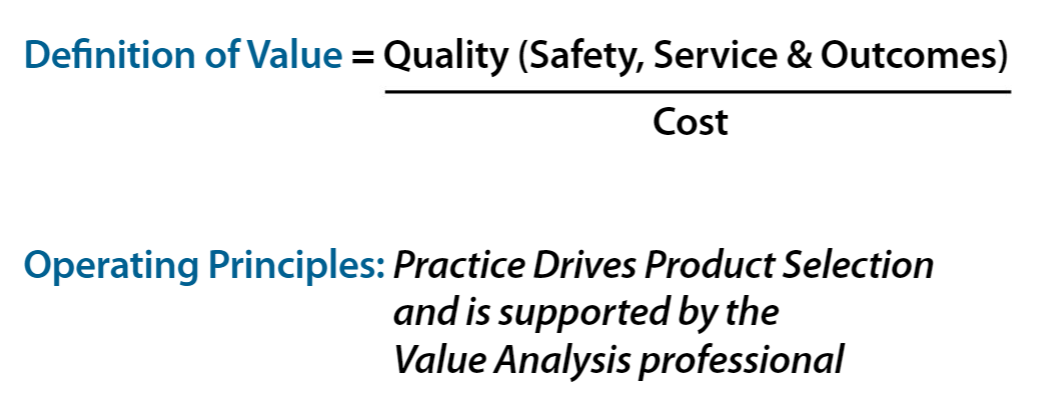By Terri Nelson, RN, Director of Value Analysis, Mayo Clinic

What is Value Analysis? I asked myself that question when I applied for the Director of Value Analysis position at the Mayo Clinic Rochester, Minnesota, campus 20 years ago. This was a new position reporting to the Director of Supply Chain Management. I had been a nurse for over 20 years at the Mayo Clinic and had never heard of this type of role, so I did an internet search only to find there was very limited information on Value Analysis within healthcare. I found a list serve group of 10 Value Analysis individuals from across the United States. I quickly joined the group, and the adventure began.
Over the last 20 years, I’ve had 3 job title changes, 4 different managers, my operational support expanded from 1 campus to all Mayo Clinic campuses and from a staff of 1 to a team of 10. As our Value Analysis processes have matured and evolved, our foundation of Value Analysis definitions and operating principles have stayed the same.

The Value Analysis process is objective, data driven, and separates clinical/technical difference from personal preference. The process is used to evaluate products based on clinical efficacy, safety, and cost. Value Analysis promotes product standardization, decreasing duplication of products and utilization, using products in the most efficient manner, the right product for the right need. Mayo Clinic uses a five step Value Analysis process which includes:
- Identification of initiative
- Data
- Analysis & recommendation
- Implementation
- Compliance
What has changed over the last 20 years? A shift in role responsibilities from being responsive to product requests to proactively understanding future practices impact on products, from decreasing duplicate products to promoting product standardization, incorporation of clinical outcomes into product review, identification of product attributes from basic to required attributes to promote best in practice. In addition, the structure of including clinical staff input has changed from separate Value Analysis committees to incorporation of the Value Analysis process into standing clinical committees’ structures.
This change decreases clinical staff needs to participate in multiple committees, promotes clinical input into contracting activities, communication of product disruptions and early identification of product conservation measures and addressing the question if there is a change in practice what impact this will have on products used. This committee structure change has also impacted how suppliers interact with healthcare providers. No longer do suppliers submit a request to Value Analysis committees for product reviews. Instead, the suppliers need to reach out to Value Analysis professionals. For some organizations they may use a third-party product request tool. At Mayo Clinic Value Analysis should be the first source of contact. Value Analysis can assist suppliers by reviewing requests, identifying any contracting conflicts and assessing users’ interest.
Twenty years ago, Value Analysis focused on managing products. Today, Value Analysis is based on three core competencies. These competencies include:
- Category management. Incorporation of the value analysis process into the contract strategies for all product categories,
- Product management. Activities relating to product disruptions including recalls, backorders, discontinuation, quality issues and
- Operational support. Focusing on product conversions, compliance and product request.
Value Analysis continues to report through Supply Chain Management. This is an important relationship as it reinforces the clinical input into supply chain and keeps the focus on the primary value, “the needs of the patient come first”.
The last area for change has been relationships. The relationships between the Clinical Practice and Supply Change Management have grown and evolved professionally. Supplier relationships with Value Analysis have also matured. Value Analysis professionals cannot do their jobs without the supplier and suppliers don’t want to have poor product, product recall, and/or backorders. What has changed between Value Analysis and suppliers (and is still changing) is increased communication and transparency of what are the issues, what caused the event, and how and when this situation will be resolved.
And the next 20 years? Well, I don’t have a crystal ball. My prediction for the future of Value Analysis would include but not be limited to the following; incorporation of Value Analysis courses into schools of supply chain and nursing curriculum’s, development of automatic digital resources to manage product request, backorders and recalls, supply assurance programs to decrease inventory disruptions, and Value Analysis working closer with supplier quality departments for early identification and resolutions of quality issues.
